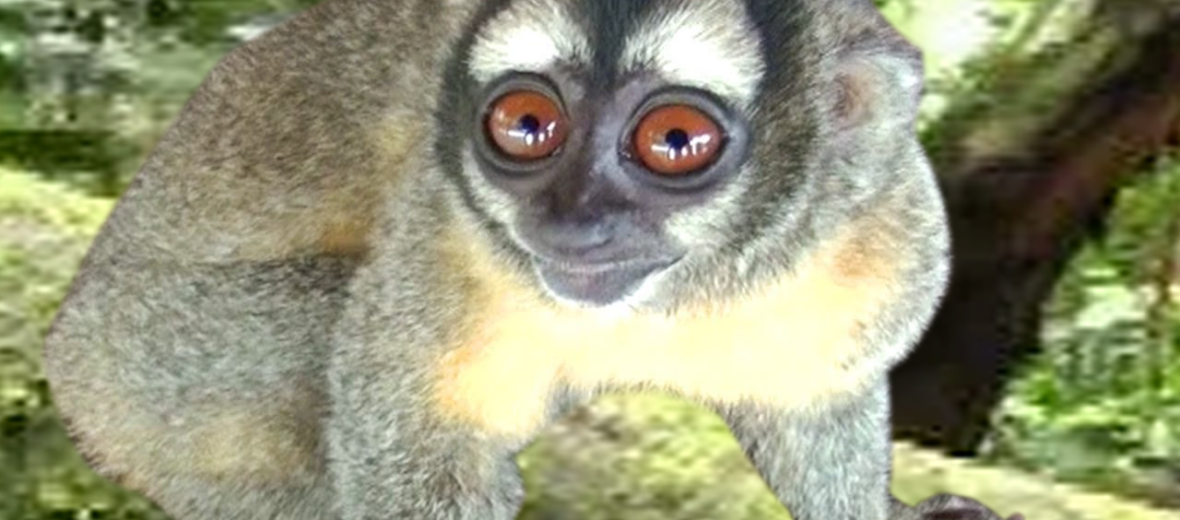
The Panamanian night monkey, aka Chocóan night monkey or owl monkey, hails from Panama and the Chocó region of Colombia, in South America. They prefer moist forests, dry forests, secondary forests, and coffee plantations. Due to extensive habitat destruction at the hands of urban development, mining, logging, and agriculture, as well as vehicle strike (being hit by vehicles), these primates are listed as Near Threatened by the IUCN.
First the Stats…
Scientific name: Aotus zonalis
Weight: Up to 31.4 ounces
Length: Up to 38.62 inches
Lifespan: Up to 18 years
Now on to the Facts!
1.) These monkeys, like many others, are arboreal (spend all or most of their lives in trees).
2.) Night monkeys are, of course, nocturnal (active at night).
3.) Troops consist of 2 – 6 individuals. The groups contain an adult male and female, 1 infant, and several juveniles.
4.) They use scent marking, body language (comprised of stiff legged jumping, arched back displays, and piloerection – erection or bristling of hairs), and vocal communications.
5.) Their vocal range consists of various grunts, moans, screams, squeals, and trills.
But wait, there’s more on the Panamanian night monkey!
6.) At around 1 year of age, males develop a scent gland at the base of their tail that is used in scent marking their territory.
7.) The Panamanian night monkey is territorial by nature and will fight other troops for territory.
Did you know…?
These monkeys lack long, prehensile tails and they also can’t change their facial expressions. This is known as hypomimia.
8.) A group of monkeys is called a barrel, cartload, tribe, troop, or wilderness.
9.) These little critters feast on fruits, flowers, leaves, nectar, and an occasional insect.
10.) Panamanians are monogamous (mate for life).
But wait, there’s still more on the Panamanian night monkey!
11.) Females birth a single infant each year after up to a 133 day gestation (pregnancy).
12.) Both the father and mother rear the infant.
13.) These primates also engage in urine washing (washing the hands and feet in urine).
14.) Wild cats, large snakes, and birds of prey all hunt these primates.
Now a Short Panamanian Night Monkey Video!
Be sure to share & comment below! Also, check out the Critter Science YouTube channel. Videos added frequently!
Want to suggest a critter for me to write about? Let me know here.



